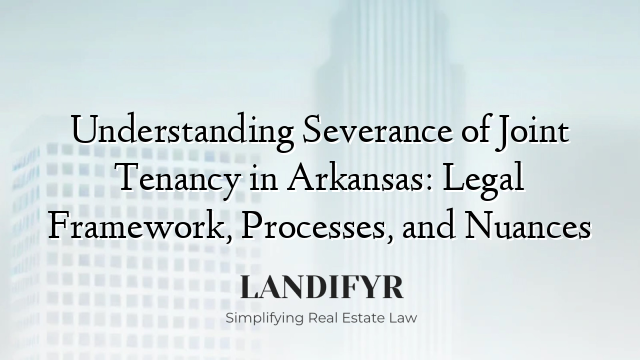Conclusion and Key Takeaways
Understanding the principles surrounding severance of joint tenancy in Arkansas is crucial for individuals involved in property ownership and estate planning. Joint tenancy, characterized by the right of survivorship, plays a significant role in how property is transferred upon the death of a co-owner. The necessity of comprehending the nuances of this legal framework cannot be overstated, as the potential ramifications of severance can have profound effects on property distribution and rights.
This blog post has illuminated the legal processes involved in severing a joint tenancy, highlighting various methods such as mutual agreement, an unintentional act, or a judicial decree. By recognizing these mechanisms, property owners can better navigate their circumstances and make informed decisions relating to their property arrangements. It is essential for co-owners to communicate effectively to ensure clarity around property ownership intentions, thus preventing disputes that may arise from misunderstandings regarding joint tenancy status.
Furthermore, it is critical to be aware of the legal implications tied to the severance process in Arkansas. Each method of severance may have different outcomes, affecting not just the current holders of property interests but also future heirs and beneficiaries. As the complexity of property law can often create uncertainties, seeking professional legal advice is highly advisable. Engaging with qualified legal practitioners who specialize in property law can provide invaluable insights and guidance tailored to individual scenarios.
In summary, a well-informed approach to understanding joint tenancy and its severance will empower property owners in Arkansas. Being proactive in obtaining professional advice ensures a clearer path forward and helps safeguard individual interests in property ownership, thereby fostering stability in estate planning endeavors.

